Nestled in the heart of the Himalayan range is the small and incredible nation of Nepal. The Nepali people are a distinctive blend of their surroundings. From the spicy Indian way of life to the south and living among the towering mountain peaks that mark the highest points on Earth, the combination creates a must see cultural mix.
This tiny Hindu nation, with a population of almost 30 million people, is bordered by Tibet to its north, India to the south, Bhutan to the east, and Bangladesh to the southwest. While generally considered off the beaten path, Nepal is a favorite for adventurers looking to take on Everest Base Camp or run the famed Annapurna Circuit Trek. Each of these undertakings is a life event in themselves but don’t miss what the rest of the country has to offer.
Mountaintop temples overlook the capital city of Kathmandu. A city with over a million people that is weaved into the foothills of the greater peaks around it. The vast majority of the population is Hindu, however, nearly 15% consider themselves Buddhist. Which is pertinent since the Lumbini province in southern Nepal is the birthplace of Buddha. No matter where you set off in the capital city, the streets are packed with a friendly people, eager to show off the best of their country.
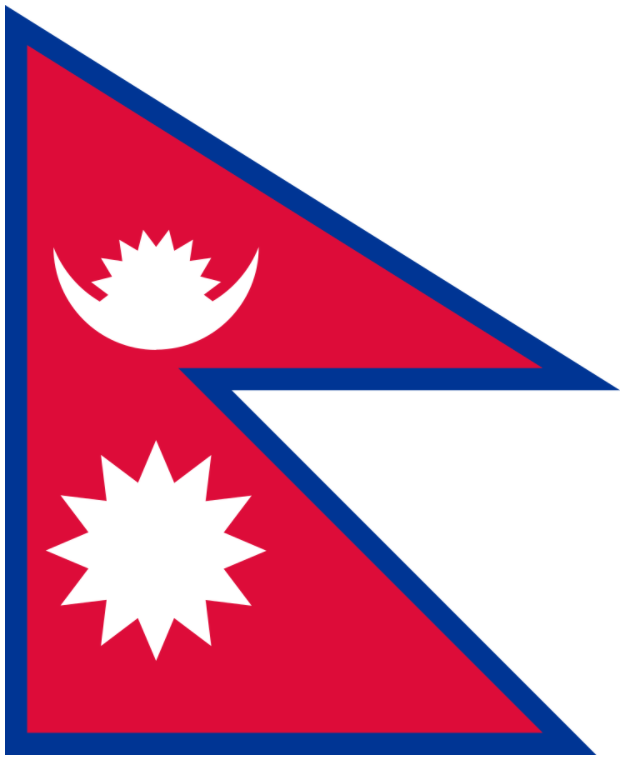
The minute you walk off the aircraft at Tribhuvan international airport, you’ll see things are different in Kathmandu. Instead of the advanced and decadent airports that dot the major metropolitan areas in Asia, this place has a beautiful simplicity. Climb down out of the airplane directly onto the tarmac. You’ll be greeted with a light haze and surrounding green and brown mountains. Once inside, burnt orange and red bricks line the walls, giving an ancient blend to the modernity of air travel. Uniquely, a photo stand lives next to customs where a quick snap and the equivalent of twenty U.S. dollars gets you an on-demand Visa. Tribhuvan airport underwent a significant renovation in 2020 that included opening a new departure terminal, so it’s possible since my visit that some of the old-school charm has been pleasantly replaced with amenities.
Outside of the airport doors, the culture of the region hits you in the face. If you are accustomed to personal space, the change may come as a bit of a shock. Throngs of people wait at the exit, each person offering a taxi, food, or advice (monetary tip expected) to incoming travelers. The density of people will overwhelm at first, but weed through the masses to score your travel first, there will be plenty of opportunities for food and shopping later. Once you find yourself in a rickshaw driving through the city, things will slow down and you’ll be able to enjoy the city.
With little to no air conditioning and periodic power outages, you’ll find most of the citizens of Kathmandu out on the streets. Outside of the major thoroughfares, most of these roads are gravel-lined and packed with vehicles. Exposed electrical wires and narrow avenues add to the surreal experience.
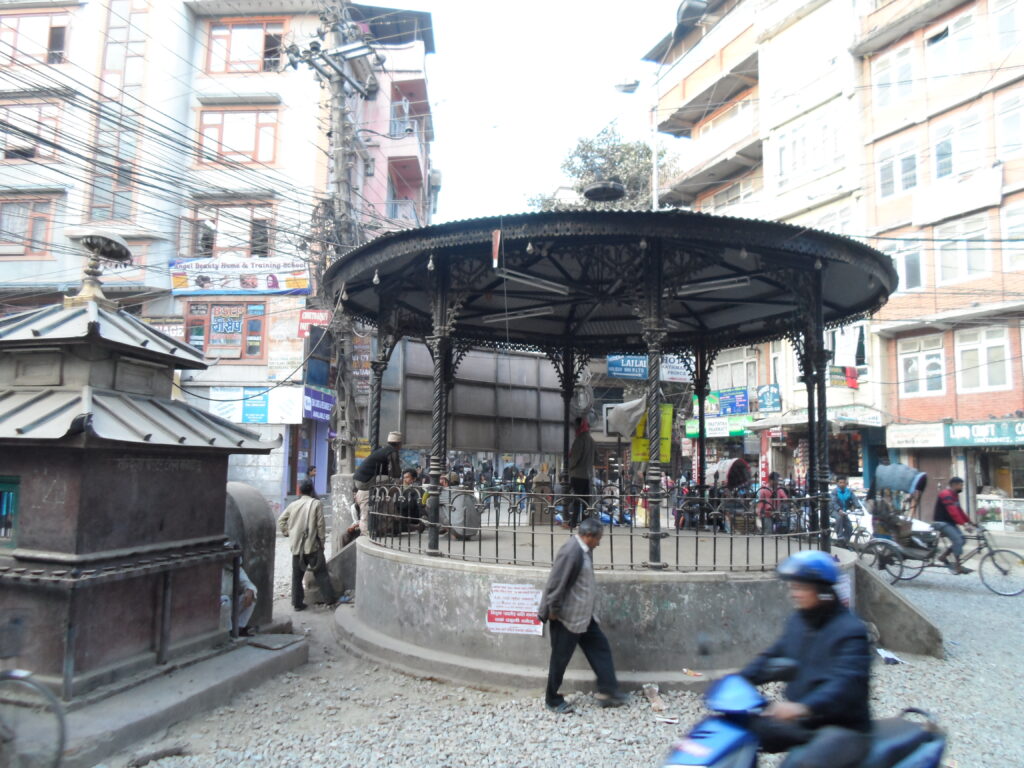
A great place to start your exploration is in Thamel. The neighborhood is the international area of Kathmandu and is packed full of open markets and fantastic food. While not known for much of a nightlife (most of the major places are closed by about 11 PM) Thamel is your best bet to find a bar or club. Looking for a cold beer, try the locally brewed Gorkha. Identifiable by the maroon and gold lettered bottle, this is one of Nepal’s best brews.
If you have a limited amount of time in the city, the first place to see is the historic Kathmandu Durbar Square. The open-air market is the heart of the city and is filled with pagodas and shrines. In the late 1400s the square became home to the kings and queens of Nepal. It is one of the many UNESCO World Heritage sites in the country.
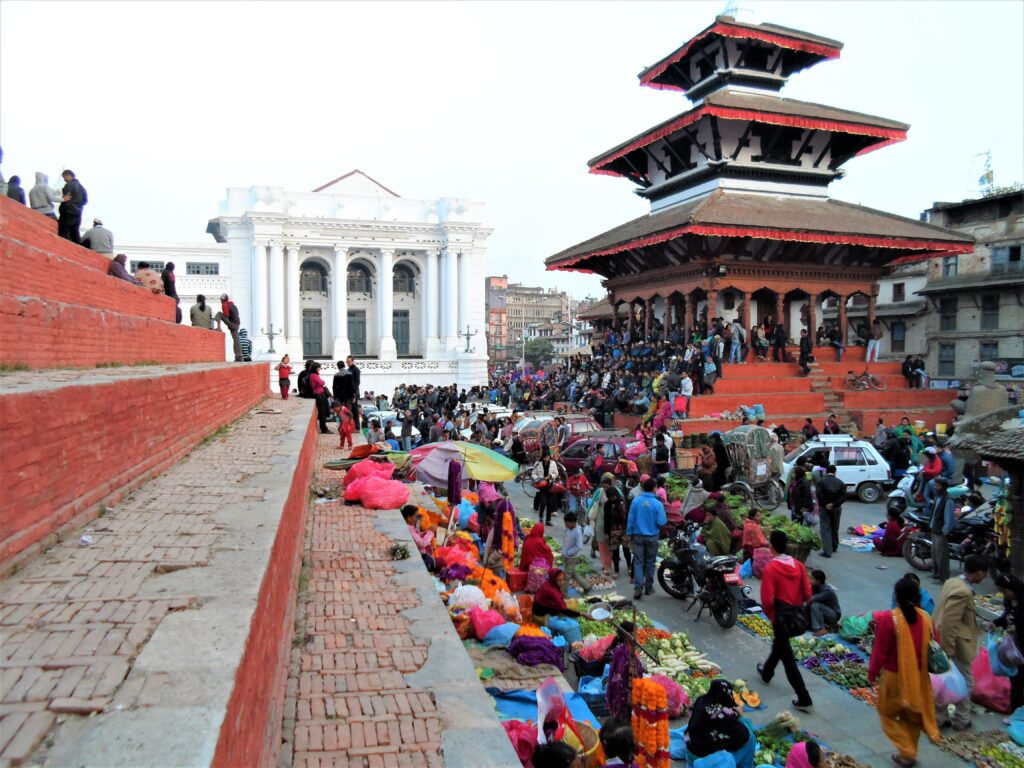
While no longer home to the royal palaces, the square has turned into a vibrant market and political action center. The old-town center offers fresh fruits and vegetables in addition to a series of spices. Take a moment to stroll the grounds and take a deep breath to enjoy the distinctive scent from the Nepalese spice.

One the edge of the square sits the palace for Nepal’s living goddess, the Royal Kumari. Entrenched in Hindu and Buddhist traditions, this prepubescent girl is selected by the chiefs of the religion and presides until she becomes an adult. Revered by many in the nation, the last time the girl’s feet will touch the ground during her decade of service will be on the night of selection. She will be carried by a troop for any ventures outside of her palace in the square. The selection process in itself is mix of history and religion and is worthy of extra research if you choose to visit the site.
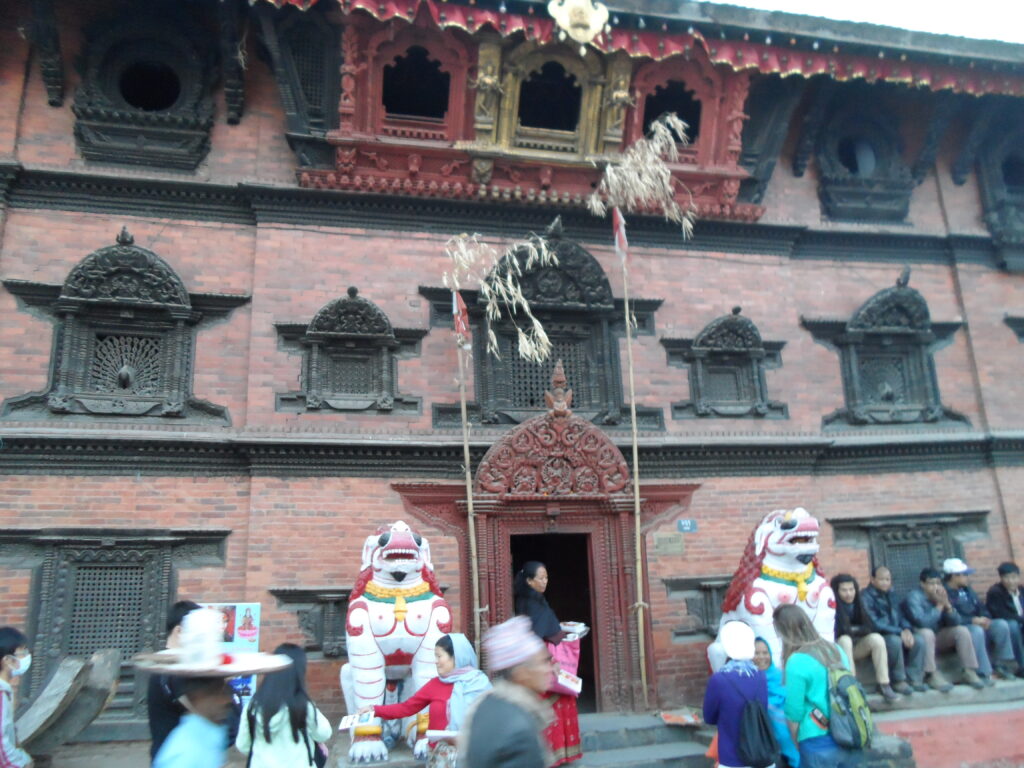
Adding to a burst of color to the city are the meticulous designed and painted sculptures and murals. One of the more interesting works is the image of Kala Bhairava. A nod to the Hindu God Shiva, it is said that in this form, Shiva is protecting to surrounding temples.
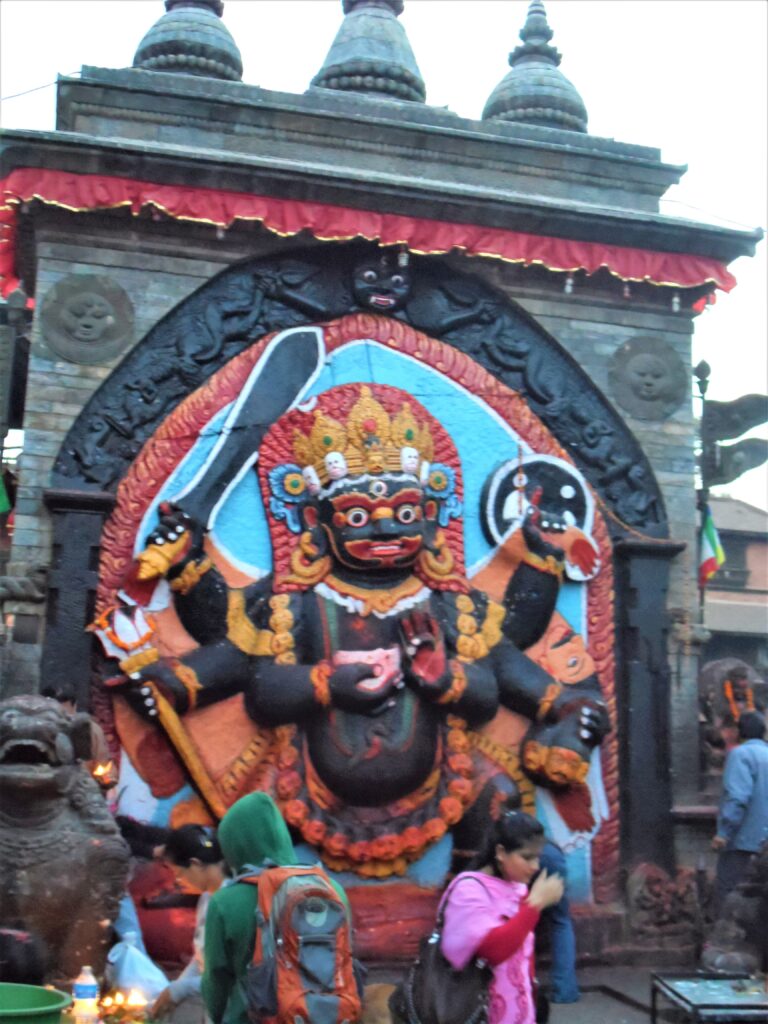
Other aspects of the Hindu religion are readily apparent in the city as well. Cows, considered sacred in the religion, fill the streets and are allowed to roam freely. They are treated with such reverence that attacking or killing a cow in Nepal carries a mandatory prison sentence.
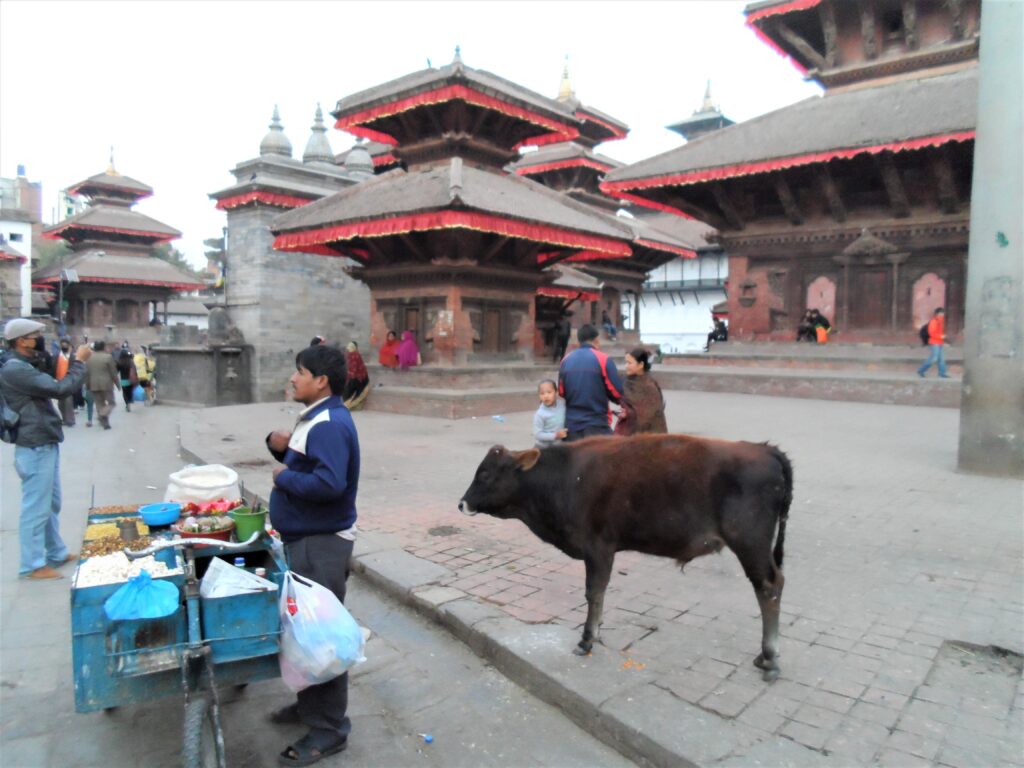
Another unique characteristic of the Durbar square is that there is no single one, in fact, there are many across the larger cities in Nepal. In Kathmandu, there are three primary squares, with the two most popular being the main square and the Patan Durbar Square. Each have slight differences making them worthwhile of an extra stop if time allows.
Whether its dodging motorbikes, livestock, or weaving through throngs of people, there is plenty to take in. The contrast from western nations is stark. One example is the image below of a man carrying twice his size on top his head. Many people in the city don’t have the benefit of work trucks to move their goods and have to rely on individual effort. Creative use of backpacks, motor bikes, and straps around the forehead were not uncommon sights.
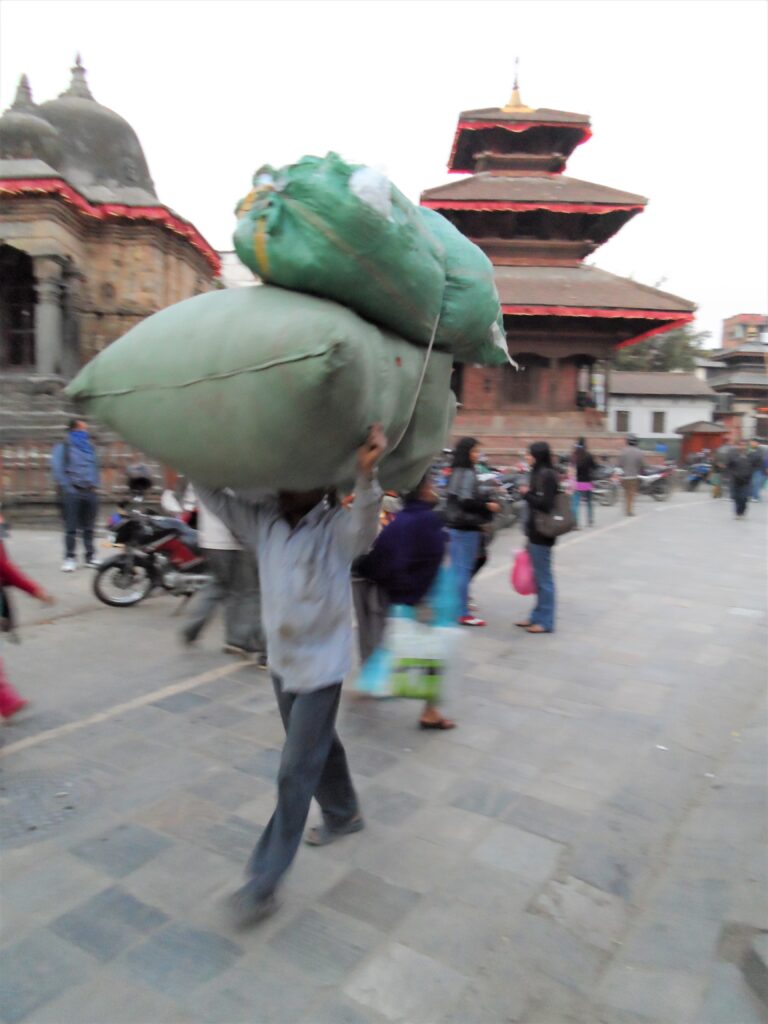
As night descends into the mountain town, the evening markets begin to pick up. The streets of the nation’s capital become alive with shoppers, prepping for evening meals. As with most open-air markets, you can find anything from purses to sunglasses, but the best thing to take advantage of in Nepal is the low-priced deals on tailored clothing. Expect to haggle, and to pay slightly more than the “Nepali” price, but you will still walk out with quality product for very few Rupees. At an exchange rate of .0086 Rupees (estimated May 2021) to one U.S. dollar, remember that almost any negotiated deal will be of mutual benefit.
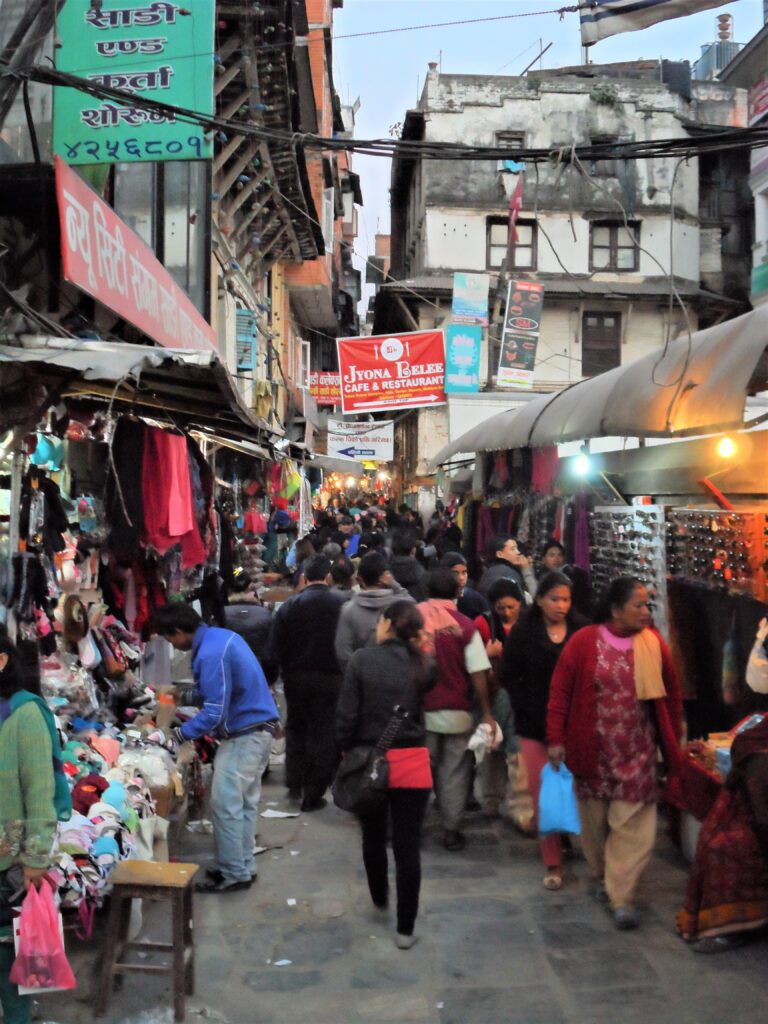
As the sun sets on part I of this blog, I’d like to make a final note. All of these photos were taken before the April 2015 earthquake that devastated the nation. Much of the ancient temples and pagodas seen in these shots of Durbar square were damaged or destroyed. The 7.8 magnitude earthquake killed almost 9000 people, including 22 in an avalanche on Mount Everest. The country is still reeling from thousands of who were rendered homeless overnight and while some of the heritage sites have been rebuilt, there is still much work ongoing six years later. Take a moment to watch the destruction in the Durbar Square real-time in this video taken by a tourist.
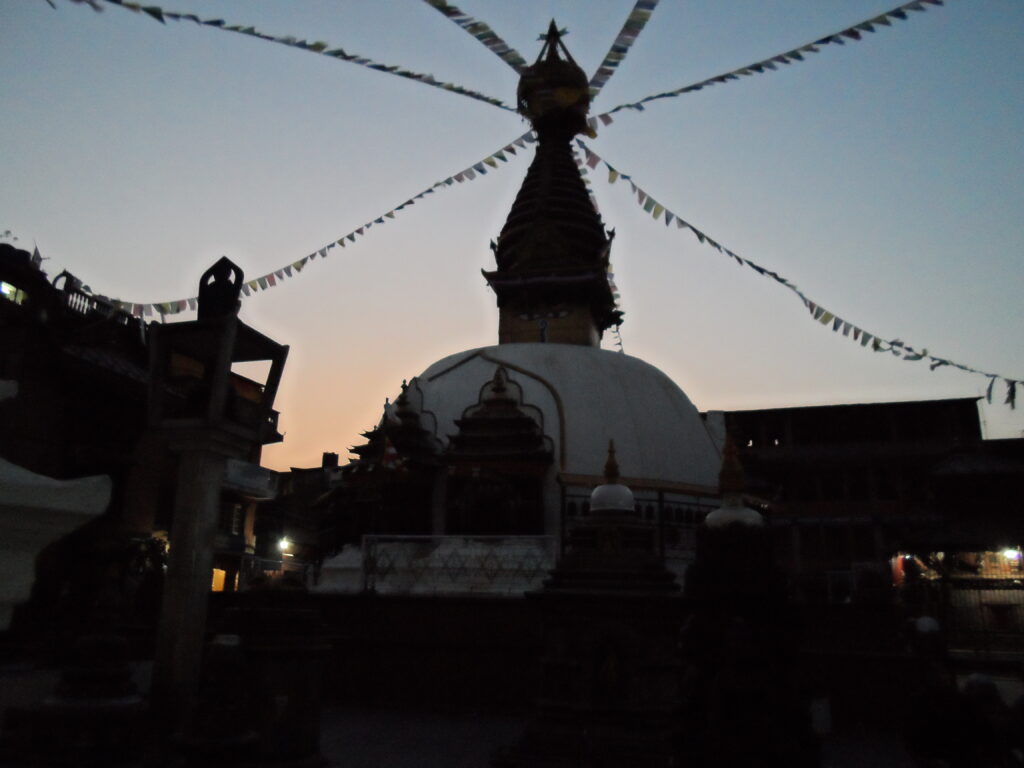
I hope you enjoyed the read. What did I miss that should be given time to see? This is the first of a three-part blog on the incredible nation of Nepal, so look for updates coming in the following weeks.
If you’re interested in checking out some previous articles, take a trip to Bangkok, and Singapore. Join my mailing list here to stay updated on travel and aviation updates and look for my next article this must-see place.

Amazing! The way you describe it, I’d love to visit Nepal someday.
Definitely add it to your adventure list! Especially if you enjoy experiences that put you slightly outside of your normal comfort zone. I ended up visiting because my wife spent an extended time in-country teaching English.
Interesting blog!